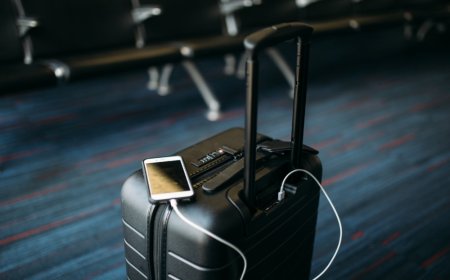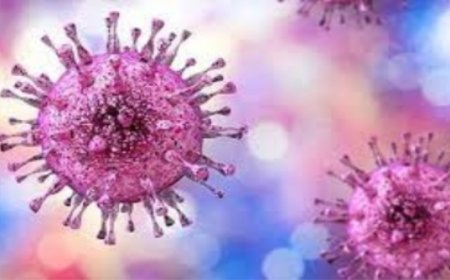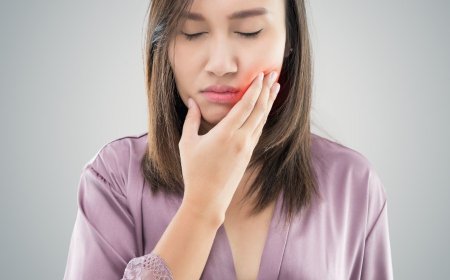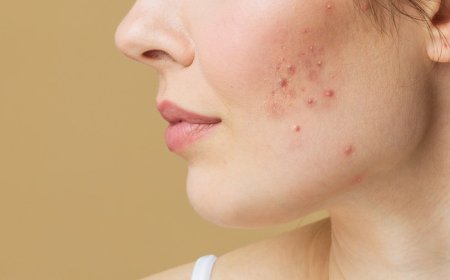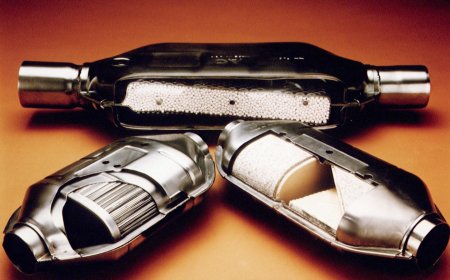When to Worry About a Rash on Your Toddler - Eblogazine
Worried about a rash on your toddler? Learn when to seek medical attention and how to soothe your child's skin in this informative article.

When to Worry About a Rash on Your Toddler
As a parent, you want to make sure that your child is healthy and safe at all times. One common concern for parents is when their toddler develops a rash. While most rashes are harmless and will go away on their own, there are times when a rash may indicate a more serious condition. In this article, we'll discuss when to worry about a rash on your toddler and what you can do to keep your child healthy.
Understanding Rashes on Toddlers
Before we talk about when to worry about a rash, it's important to understand what causes rashes in the first place. Rashes can be caused by a variety of factors, including allergies, infections, and skin irritants. Some common types of rashes in toddlers include:
Diaper Rash
A diaper rash is a common occurrence in toddlers who wear diapers. It occurs when the skin in the diaper area is irritated due to prolonged exposure to urine and feces.
Eczema
Eczema, also known as atopic dermatitis, is a skin condition that causes red, itchy, and inflamed patches on the skin. It can be triggered by various factors, including allergies and stress.
Hives
Hives are itchy red bumps that can appear anywhere on the skin. They are usually caused by an allergic reaction to food, medication, or insect bites.
Impetigo
Impetigo is a bacterial skin infection that causes red sores around the mouth and nose. It is highly contagious and can spread rapidly to other parts of the body.
Molluscum Contagiosum
Molluscum contagiosum is a viral skin infection that causes small, raised, and painless bumps on the skin. It is highly contagious and can spread through skin-to-skin contact.
Roseola
Roseola is a viral infection that causes a pinkish-red rash on the skin. It usually occurs in toddlers between the ages of 6 months to 2 years.
Scabies
Scabies is a skin infestation caused by tiny mites that burrow into the skin. It causes a pimple-like rash and intense itching.
Ringworm
Ringworm is a fungal infection that causes a circular rash with raised edges. It is highly contagious and can spread through skin-to-skin contact or contact with contaminated objects.
What Causes Rashes in Toddlers?
Rashes in toddlers can be caused by a variety of factors, including:
-
Contact dermatitis: This is caused by contact with an irritant, such as soaps, detergents, or fabrics. The rash may be red, itchy, and appear where the skin came into contact with the irritant.
-
Eczema: Eczema is a chronic skin condition that causes red, itchy, and scaly patches on the skin. It often occurs in infants and toddlers and can be triggered by allergens or irritants.
-
Heat rash: Heat rash occurs when sweat glands become blocked, leading to red, itchy bumps on the skin. This is common in hot, humid weather.
-
Viral infections: Certain viruses can cause a rash in toddlers, such as chickenpox, measles, and fifth disease. These rashes usually come with other symptoms like fever, cough, and runny nose.
-
Allergic reactions: Toddlers can have an allergic reaction to food, insect bites, or medication, which can cause a rash.
-
Fungal infections: Fungal infections, such as ringworm and yeast infections, can also cause a rash in toddlers.
When to Worry About a Rash
While most rashes are harmless and will go away on their own, there are times when a rash may indicate a more serious condition. Here are some signs to watch out for:
Your Child Has a Fever
If your child has a rash and a fever, it may be a sign of an infection that requires medical attention.
The Rash Spreads Quickly
If the rash spreads quickly or becomes more severe over time, it may be a sign of a more serious condition, such as an allergic reaction or infection.
The Rash is Painful
If your child's rash is painful, it may be a sign of a more serious condition, such as shingles or chickenpox.
The Rash Lasts More Than a Week
If the rash lasts for more than a week, it's important to have it checked out by a healthcare professional.
What to Do if You're Worried About Your Child's Rash
If you're worried about your child's rash, it's important to seek medical attention. Your child's healthcare provider can help determine the cause of the rash and provide treatment if necessary. In the meantime, here are some tips to help soothe your child's skin:
Keep the Skin Clean and Dry
Keeping the skin clean and dry can help prevent further irritation and promote healing.
Apply a Moisturizer
Applying a moisturizer can help soothe dry, itchy skin.
Use Over-the-Counter Creams
Over-the-counter creams, such as hydrocortisone cream, can help reduce inflammation and itching.
How to Treat Rashes on Toddlers?
-
Identify the cause of the rash: Before treating a rash on your toddler, it's important to identify the underlying cause. Common causes of rashes in toddlers include allergies, irritants, heat rash, viral infections, bacterial infections, and fungal infections. Once you identify the cause, you can choose the appropriate treatment.
-
Keep the affected area clean and dry: Regardless of the cause, it's important to keep the affected area clean and dry. This can help prevent further irritation and infection. Use mild soap and warm water to gently clean the area, and pat it dry with a clean towel.
-
Apply topical creams: Topical creams can be used to relieve itching and inflammation associated with rashes. Hydrocortisone cream, for example, can be used to treat eczema, allergic reactions, and other types of rashes. Calamine lotion can be used to soothe itchy and irritated skin. Be sure to follow the instructions on the label, and apply the cream or lotion only to the affected area.
-
Use antihistamines: Antihistamines can be used to treat rashes caused by allergies. They work by blocking the release of histamine, a chemical that causes inflammation and itching. Common antihistamines include diphenhydramine (Benadryl), loratadine (Claritin), and cetirizine (Zyrtec). However, be sure to consult with your pediatrician before administering any antihistamines to your toddler.
-
Use antibiotics: If the rash is caused by a bacterial infection, your pediatrician may prescribe antibiotics to treat the infection. Antibiotics may be given orally or as a topical cream or ointment.
-
Apply moisturizers: Moisturizers can help soothe dry and itchy skin, especially in cases of eczema. Choose a fragrance-free, hypoallergenic moisturizer and apply it to the affected area after bathing.
In addition to these treatments, there are a few things you can do to prevent rashes in toddlers. These include:
- Dressing your toddler in loose-fitting, breathable clothing
- Avoiding exposure to irritants, such as harsh soaps and detergents
- Keeping your toddler cool and dry in hot weather
- Washing your toddler's hands frequently to prevent the spread of infections
Home Remedies for Toddler Rash
-
Oatmeal Bath: Add 1-2 cups of oatmeal to a warm bath and let your toddler soak in it for 15-20 minutes. Oatmeal has anti-inflammatory properties that can soothe the skin and reduce itching.
-
Coconut Oil: Apply a thin layer of coconut oil to the affected area. Coconut oil has antifungal and antibacterial properties that can help reduce inflammation and prevent further irritation.
-
Aloe Vera Gel: Apply fresh aloe vera gel to the affected area to soothe the skin and reduce itching. Aloe vera has anti-inflammatory properties that can help reduce inflammation and promote healing.
-
Calamine Lotion: Apply calamine lotion to the affected area to relieve itching and reduce inflammation. Calamine lotion contains zinc oxide and iron oxide, which help dry out the rash and promote healing.
-
Baking Soda Paste: Mix baking soda with water to form a paste and apply it to the affected area. Baking soda has antifungal and antibacterial properties that can help reduce inflammation and prevent further irritation.
-
Apple Cider Vinegar: Mix equal parts of apple cider vinegar and water and apply it to the affected area with a cotton ball. Apple cider vinegar has anti-inflammatory properties that can help reduce inflammation and relieve itching.
-
Epsom Salt Bath: Add 1-2 cups of Epsom salt to a warm bath and let your toddler soak in it for 15-20 minutes. Epsom salt has anti-inflammatory properties that can soothe the skin and reduce itching.
-
Chamomile Tea Bath: Brew a cup of chamomile tea and add it to your toddler's bath. Chamomile tea has anti-inflammatory properties that can help soothe the skin and reduce itching.
-
Honey: Apply a thin layer of honey to the affected area. Honey has antibacterial properties that can help prevent infection and promote healing.
-
Cold Compress: Apply a cold compress to the affected area to reduce inflammation and relieve itching. You can use a washcloth soaked in cold water or a bag of frozen peas wrapped in a towel.
Prevention Tips
Prevention is always better than cure. Here are some tips to prevent toddler rashes:
Keep the skin clean and dry
Use a mild soap and avoid harsh chemicals
Use fragrance-free and hypoallergenic products
Dress your toddler in loose, breathable clothing
Change diapers frequently and use diaper rash cream
Avoid exposure to allergens and irritants
Conclusion
In conclusion, a rash on your toddler can be concerning, but most rashes are harmless and will go away on their own. However, if your child has a fever, the rash spreads quickly, the rash is painful, or the rash lasts for more than a week, it's important to seek medical attention. Remember to keep your child's skin clean and dry, apply a moisturizer, and use over-the-counter creams to help soothe the skin. By staying vigilant and taking care of your child.
What's Your Reaction?















